Mendelian randomization analysis reveals potential association between allergic rhinitis and nasopharyngeal carcinoma
- PMID: 40382519
- PMCID: PMC12085739
- DOI: 10.1007/s12672-025-02658-1
Mendelian randomization analysis reveals potential association between allergic rhinitis and nasopharyngeal carcinoma
Abstract
Background: Nasopharyngeal carcinoma (NPC) is characterized by complex interactions within its tumor microenvironment. Understanding the immune landscape and gene expression patterns is crucial for developing effective therapeutic strategies.
Methods: We employed multiple analytical approaches including Mendelian randomization analysis, single-cell sequencing, gene expression profiling, and spatiotemporal analysis. The study investigated associations between NPC and comorbidities, characterized immune cell populations, and analyzed gene expression patterns. Cytokine profiles and their effects on disease risk were also examined.
Results: The analysis revealed potential associations between NPC and both allergic rhinitis and high myopia. Single-cell sequencing identified distinct cellular populations, including three unique B cell subpopulations (M1, M2, M3) with specific molecular signatures and spatial distributions. Temporal analysis showed dynamic changes in immune cell composition: endothelial and epithelial cells dominated the early phase, B cells peaked in the middle phase, and dendritic and T cells increased in the late phase. Gene expression clustered into four main patterns, with significant roles for immune-related genes, particularly the TNFRSF family and HLA-related genes. Cytokine analysis identified IL-6 as a significant risk factor (31.4% increased risk) while IL-10 showed protective effects (8% risk reduction).
Conclusions: This comprehensive analysis provides detailed insights into the complex immune microenvironment and molecular mechanisms of NPC. The identification of distinct cellular populations, temporal patterns, and key molecular players offers valuable information for understanding disease progression and developing targeted therapeutic strategies.
Keywords: Allergic rhinitis; B cell subpopulations; Mendelian randomization; Nasopharyngeal carcinoma; Single-cell sequencing.
© 2025. The Author(s).
Conflict of interest statement
Declarations. Ethics approval and consent to participate: Not applicable. Consent for publication: All authors agree to publish this article. Competing interests: The authors declare no competing interests.
Figures



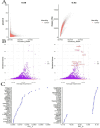
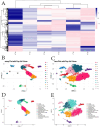


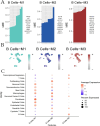
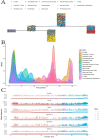
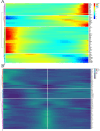
Similar articles
-
The cellular signaling crosstalk between memory B cells and tumor cells in nasopharyngeal carcinoma cannot be overlooked: Their involvement in tumor progression and treatment strategy is significant.J Cancer. 2025 Jan 1;16(1):288-314. doi: 10.7150/jca.101420. eCollection 2025. J Cancer. 2025. PMID: 39744570 Free PMC article.
-
Single-cell transcriptomic landscape reveals complex cellular heterogeneity and dysregulated signaling pathways in nasopharyngeal carcinoma.Discov Oncol. 2025 May 19;16(1):818. doi: 10.1007/s12672-025-02506-2. Discov Oncol. 2025. PMID: 40389670 Free PMC article.
-
KMO-driven metabolic reconfiguration and its impact on immune cell infiltration in nasopharyngeal carcinoma: a new avenue for immunotherapy.Cancer Immunol Immunother. 2025 Feb 1;74(3):75. doi: 10.1007/s00262-024-03928-7. Cancer Immunol Immunother. 2025. PMID: 39891699 Free PMC article.
-
Exploring nasopharyngeal carcinoma genetics: Bioinformatics insights into pathways and gene associations.Med J Malaysia. 2024 Sep;79(5):615-625. Med J Malaysia. 2024. PMID: 39352166 Review.
-
New insights into the tumour immune microenvironment of nasopharyngeal carcinoma.Curr Res Immunol. 2022 Sep 9;3:222-227. doi: 10.1016/j.crimmu.2022.08.009. eCollection 2022. Curr Res Immunol. 2022. PMID: 36118267 Free PMC article. Review.
References
-
- Chen G, Sun DC, Ba Y, Zhang YX, Zhou T, Zhao YY, Zhao HY, Fang WF, Huang Y, Wang Z, et al. Anti-LAG-3 antibody LBL-007 plus anti-PD-1 antibody toripalimab in advanced nasopharyngeal carcinoma and other solid tumors: an open-label, multicenter, phase Ib/II trial. J Hematol Oncol. 2025;18(1):15. - PMC - PubMed
Grants and funding
LinkOut - more resources
Full Text Sources
Research Materials
